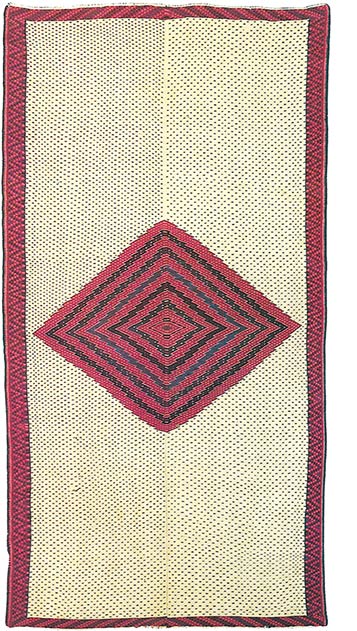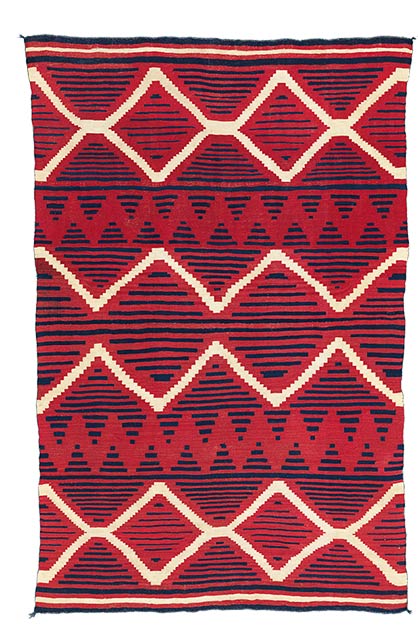What’s the Difference Between a Saltillo Serape and a Bayeta Serape?
Classic Saltillo serapes were woven in northern Mexico between 1700 and 1820. Some Saltillo serapes were woven in workshops in the city of Saltillo, the capital of Coahuila Province in northeastern Mexico. Others were woven in workshops in San Miguel de Allende, in the Free State of Guanajuato, in central Mexico. The workshops were run by Spanish and Mexican overseers. The weavers were mostly Tlaxcalan Indians.
Saltillo serapes are woolen wearing blankets, woven as garments for wealthy Mexican landowners, and for the vaqueros, or cowboys, who worked on large cattle ranches in northern Mexico. Most Saltillo serapes were woven on narrow floor looms, in two mirror-image panels After both panels were finished, the two panels were sewn together to create a complete serape. The average dimensions of a Saltillo serape are 90 inches long by 48 inches wide, as woven in two panels.
By 1750, the Saltillo serape was a valuable trade item throughout northern Mexico and the Rio Grande Valley. The Navajos probably saw Saltillo serapes during the late 1700s. By 1825, Navajo women were weaving the bayeta serape, also known as the “Serape Navajo.”
Bayeta serapes were woven longer than wide, in one piece, on upright looms. While Saltillo serapes usually have a large serrated diamond at the center of a bordered field, bayeta serapes have multiple terraced diamonds, or terraced diagonal patterns, that run horizontally from edge-to-edge across their un-bordered red fields. Bayeta serapes are not Navajo imitations of Saltillo serapes so much as they’re Navajo interpretations or memories of the concentric diamonds that appear in Saltillo serapes. By 1830, the Navajo serape had replaced the Saltillo serape as the most valuable wearing blanket in Mexico, and in the Rio Grande Valley.
Learn more about Navajo Serapes.




